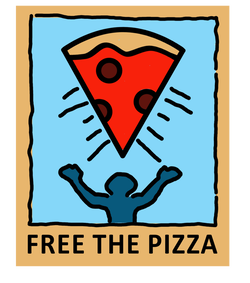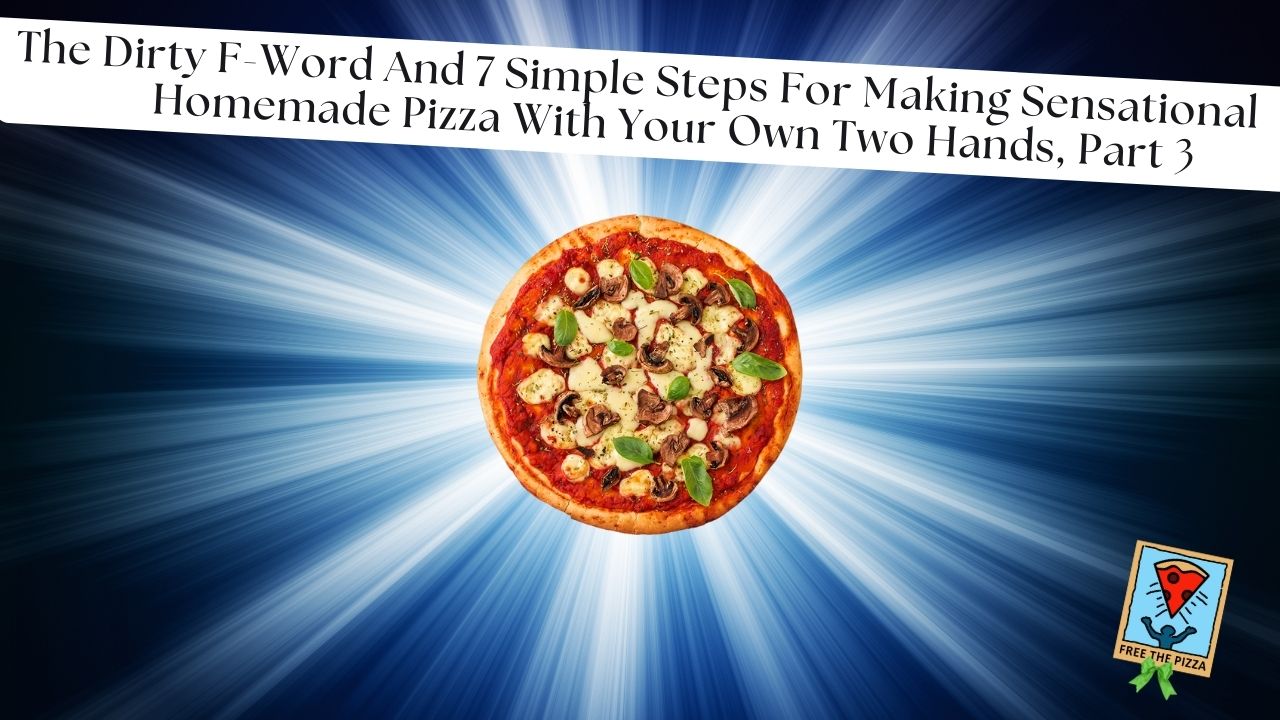|
PART 3 IN A 7-PART SERIES Welcome to the third point of focus for pursuing pizza perfection (knowing, of course, that perfection is unattainable). This part of the process can get people all worked up. I’m not sure why. I suspect it has something to do with a) our trust in machines, and b) the distrust of our innate abilities, which those machines have beaten into us. Since we’ve already focused on 1) Style Of Pizza and 2) The Oven, it’s time to focus on 3) Making Dough. This is all going to sound insanely simple. Ya know why? Because it is. It's so simple, it freaks people out. And I will freely admit this: since focusing on this part of the process more, my pizza has improved considerably. And it almost happened by a glorious accident. My stand mixer was in storage and I couldn't get to it. Pizza dough is dunce-hat simple. Water, flour, salt, yeast. Those are the ingredients of my preferred pizza dough recipe. It’s as simple as pizza dough gets.
You can venture beyond that modest paradigm. But there isn’t a lot more to add. The two common additions are sugar and olive oil. Some bakers will add other things to their pizza dough. There are “white powders,” refined natural ingredients that affect dough behavior. There are also dough additives that change flavor and texture, like seeds and additional grains. But Free The Pizza is all about the basics for the newbie. So we’re focusing our discussion here to a dough of water, flour, salt and yeast. The first part of our dough focus has little to do with dough. It has more to do with helping you (yes) focus. With that in mind, are you ready for your French lesson? Bonjour, Mise En Place! You may have heard “mise en place” before. It’s pronounced “meeze ahn plass.” It’s a phrase from the French culinary lexicon. It means “putting in place” or “gather.” Somewhat more liberally translated, you can say it’s about having a place for everything, and having everything in its place. It’s a simple process that can save your ass. We’re talking about organizing your workspace. You start by deciding where in the kitchen you’re going to work. Then, I recommend clearing away anything in that workspace that isn’t required for making dough. Next, bring all your tools and ingredients into the workspace. Measure out your ingredients ahead of time. For the salt and yeast, which are measured in tiny amounts, I use pinch bowls. Same thing if I happen to be using oil and sugar. Before beginning, make sure your water is at the right temperature. I use either an infrared thermometer or an instant-read thermometer. They're both inexpensive, and I’ve found them both to be pretty close in their readings. If you don’t have a thermometer, well…try to be a good judge of water temp. That might sound naïve. But I admit that, especially at the beginning when I lacked such tools, I’d stick my finger into the water and say, “Yeah, I could probably get hypothermic after too much time in that measuring cup. That water’s cool enough to be about 65 degrees.” While we’re doing a kind of a biochemistry experiment here, it’s still just pizza. I can’t be like some of the pizza pros out there who INSIST you use thermometers and scales. You can do a decent job without them. Our focus here is not on buying gear. It’s about the process and your mindset. That said, using the right tools if you have them and acknowledging precision is a good idea. As you begin to mix the ingredients (here it comes!): Focus. There are clear stages that your dough is going to go through. You want to pay attention to them. Enjoy getting your hands in there and feeling how the dough begins to come alive. And make no mistake: it is alive. Those yeast you’ve put in there are waking up and starting to eat the sugars in the dough. Kneading the dough is about hydrating the flour so a gluten network can develop. These networked strands of protein are what give the dough stretch. It ultimately lets us form the dough into a flat disk, using it as a foundation for sauce and cheese. Feeling and understanding what’s going on in the dough during this process is all part of the focus. And yes, I do hope you’re kneading by hand. I recommend against mechanical mixers, at least at the beginning. I haven’t made dough with a mixer in several years—despite research showing that mechanical mixing is more thorough. The reason for doing it by hand is simple. It’s easier to feel when the dough is doing what it’s supposed to do. It’s also virtually impossible to over-knead the dough. When you have your hands in the wet dough, you can actually focus on what’s happening in there. The dough changes in your hands. It goes from a gloppy, wet mess to a shaggy, sticky ball to a smooth, elastic globe—all in front of you. There’s a transformation happening right there in your hands. That dough you’re making is a friend. It is going to work with you to make pizza. By focusing on your friend’s transformation into a near-perfect ball of pizza-dough goodness, you begin to understand the overarching magic of making pizza. (People will try to shame you for having an "imaginary" friend. Ignore them. Your pizza will wipe that sneer right off their faces.) I used to look at making dough as the drudgery part of making pizza. Now, I actually enjoy it. Standing there while the KitchenAid whined and groaned was no fun. And often, the dough was uncooperative. It often felt like a crapshoot whether it was going to work out. Once I started kneading by hand and focusing on the tactile part of the process, the annoyance factor evaporated. And as I write this, I’m in the process of experimenting with doughs for a new book about making New York Pizza. I’ve made more dough by hand in the last three months than I’ve previously ever made in a year. And focusing on the tactile experience has made it far more enjoyable. Focusing on your dough is perhaps the most significant part of making pizza. Yes, the other parts are also important. But at the end of the process, the dough is the foundation for all the pizza to come. Focus is your friend—and so is your dough. Become intimate with it, focus on it, and it will help you become a pizza god to those friends who are eating and marveling at your pizza. Next time, the mise en place continues in the space where you make the magic happen. We’re going to talk about the simple preparations that make for successful pizza. If you haven’t yet enjoyed the life-changing journey through basic pizza preparedness (how’s that for self-aggrandizing silliness?), you can find your copy of the fast and funny pizzamaker’s manual, Free The Pizza! (A Simple System For Making Great Pizza Whenever You Want With The Oven You Already Have) at Amazon by clicking here. HAPPY NEW YEAR!
0 Comments
Leave a Reply. |
AuthorBlaine Parker is the award-winning author of the bestselling, unusual and amusing how-to pizza book, Free The Pizza. Also known as The Pizza Geek and "Hey, Pizza Man!", Blaine is fanatical about the idea that true, pro-quality pizza can be made at home. His home. Your home. Anyone's home. After 20 years of honing his craft and making pizza in standard consumer ovens across the nation, he's sharing what he's learned with home cooks like you. Are you ready to pizza? Archives
July 2024
Categories
All
|
© Copyright 2021, 2022, 2023, 2024. All rights reserved.
As a ShareASale Affiliate and an Amazon Associate, we earn a small percentage from qualifying Amazon purchases at no additional cost to you.
When you click those links to Amazon (and a few other sites we work with), and you buy something, you are helping this website stay afloat, and you're helping us have many more glorious photographs of impressive pizza.
When you click those links to Amazon (and a few other sites we work with), and you buy something, you are helping this website stay afloat, and you're helping us have many more glorious photographs of impressive pizza.


 RSS Feed
RSS Feed